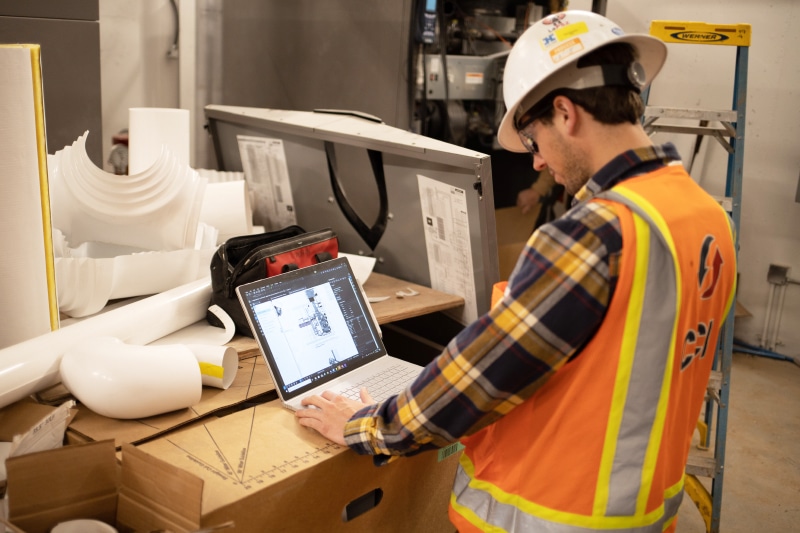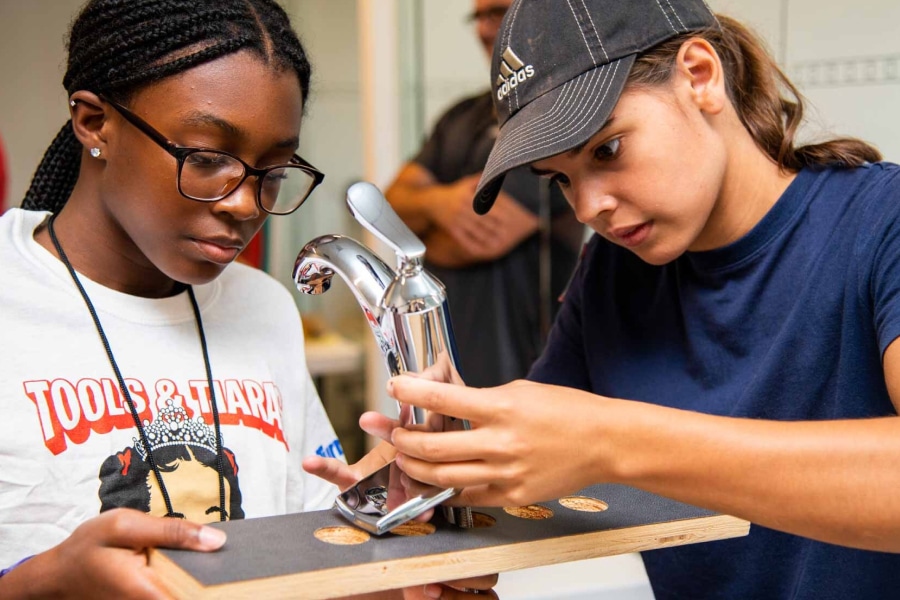Every industry strives for steady growth. The construction industry is no exception. As of the end of 2019, the construction industry had experienced a 2% increase in overall employment.
That trajectory was expected to continue in 2020, but the COVID-19 pandemic and resulting economic contraction appears likely to put a damper on any near-term hiring plans. A recent survey conducted by the Associated General Contractors of America and Sage Construction and Real Estate found that 3 in 4 contractors had expected to add more workers this year prior to the outbreak.
While the pace of hiring in the construction industry in the foreseeable future is uncertain, a big part of the industry’s inevitable recovery will need to come in the form of making a career in construction more appealing to younger workers.
These approaches can help companies attract more younger workers.
Emphasize inclusivity
Courtney Cannata, vice president and human resources director for Providence, Rhode Island-based building and development company Gilbane Inc., said it emphasizes promoting inclusion in its workforce through the creation of Employee Resource Groups (ERGs) and other inclusivity programs.

“Genuinely having an inclusive environment is really of critical importance to us,” Cannata said. “And more and more we are focused on inclusion and not diversity; inclusion will drive diversity.”
That emphasis on inclusion is evidenced by the role Gilbane gives to its ERGs. “We tasked them with some of our business challenges, and they’re really helping to create the future vision and strategic direction of the organization,” Cannata said. These groups make an impact in recruiting as they often go to industry events designed to promote and improve diversity, in the process helping Gilbane widen its talent pool.
An inclusive mindset trickles down to all employees. Emily Campbell, a 30-year-old marketing and business development specialist for General Pavement Management (GPM) in Buellton, California, said one of the reasons she enjoys working for GPM is that the company is “definitely ahead of the curve in terms of benefits and hiring.”
“I think it’s good for a lot of industries to be hiring younger and more diverse people,” Campbell said, “just to keep up with the different curves of the world.”
Train, promote, support
Dr. Barbara Jackson, the director of the Burns School of Real Estate and Construction Management at the University of Denver in Colorado, has been involved in the construction industry as both a professional and an academic for more than 40 years.

Jackson said it’s important that construction firms provide young people with opportunities to “be in the room” when project decisions are being made. Oftentimes younger employees are excluded from meaningful project decisions because they don’t have the requisite experience.
While Jackson said that young people are aware that they may not have the knowhow to be a project manager, they still want to feel connected to the larger decision-making process. “These younger people, they don’t want to be put in these boxes,” Jackson said.
Companies like Gilbane alleviate those concerns through internal training that emphasize upward mobility.
“We have an award-winning Gilbane University that provides a broad variety of technical training and leadership development,” Cannata said. “That’s been an investment that we’ve made consistently for many years.”
Such training and forward thinking is valuable. GPM’s Campbell said the company’s focus on growth and innovation has been to vital to improving both employee morale and overall efficiency.

“We’re using tons of technology in our shop and that helps us be more efficient and budget jobs better, and people are happier,” Campbell said.
Articulate a broader vision
“I believe the construction industry is visionless,” Jackson said, adding that the industry needs to be less afraid to speak about the value it brings to society.
Jackson said she’s disappointed in the flippant way people in construction often dismiss their own work as “just construction,” when, in her view, construction is foundational to society.
“There’d be no housing, no healthcare, no education, no transportation, no energy, no recreation, no worship—there would be nothing,” Jackson said. “Nothing would exist without this industry, but we don’t speak it that way.”
To increase the talent pool, Jackson said the messaging needs to expand beyond that reductive view and instead focus on the social and financial influence that the industry can have on people’s lives.
Jackson said this is what her students at the University of Denver care about. They want to show that “we can deliver more than just the nuts and the bolts and the bricks and the screws and the concrete and the steel of the project,” Jackson said. “We can deliver more.”
Cannata agreed: “What we see is a pretty consistent trend across several years; that students coming out of college are not just looking for a job, they’re looking to contribute to their community.”
Cannata explains that Gilbane emphasizes this element of community-building in the company’s efforts to attract new employees, and that it’s becoming increasingly important every year.
Construction, like all industries, is constantly looking for the next generation of leaders. By incorporating some of these approaches, construction firms can position themselves for success to be ahead of the curve when it comes hiring in a competitive market for top talent.











